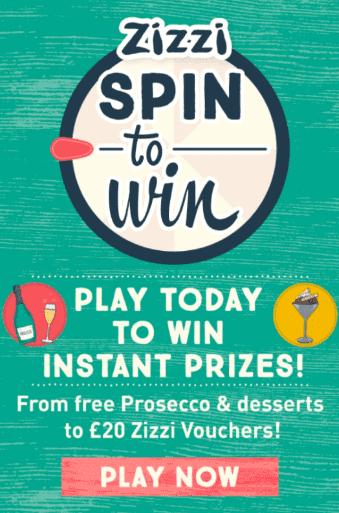The Ultimate Guide To Using Gamification in Email Marketing
15 Apr 2019 | 4 min read
From Instagram messages to YouTube videos to online news reports, people consume countless information at a rapid pace every single day. In fact, a study [1] by the University of California San Diego suggested that Americans consume an average of 74 gigabytes of data per day—and this number is still growing. Marketers already find it challenging to reach consumers, and the rise of data and content are making the engagement game even more competitive. If you want to get the attention of your audience, then you have to think outside the box and try something new. This is where gamification comes into play.
What is gamification?
Gamification is the use of gaming elements and principles like scoring points, competition among players, and pre-determined goals or objectives in non-game situations.
In the marketing context, gamification is often integrated into campaigns in order to improve audience engagement, award customers, or encourage customers to take action (e.g. making a purchase).
Why is gamification important to marketers?
Gamification is a relatively new tactic in marketing. However, it’s gaining popularity among marketers—and it’s not hard to see why.
When you incorporate aspects of gaming into your marketing strategies, you make your campaigns a whole lot more interactive. Allowing your audience to participate in your campaigns keeps them engaged and places your brand firmly in their minds.
Better engagement with your customers also results in significantly increased revenue. According to a survey [2] conducted by Rosetta Consulting, engaged customers purchase 90 per cent more frequently, spend 300 per cent more compared to other customers, and are five times more likely to buy from the same brand in the future.
Another benefit of gamification is that it provides you with valuable insight into your customers’ behaviour. By introducing interactive elements into your marketing campaigns, you learn how your customers act in specific situations. You also find out what types of game scenarios your customers are into or not into.
Do they like quizzes, or do they prefer something else, like competing with their fellow patrons? Having this kind of information at your disposal makes it easier for you to adjust your gamification strategies according to what your subscribers want.
For example, let’s say you’re A/B testing two interactive strategies for the same campaign. If one strategy gets more opens and click-throughs, then that automatically tells you it’s the type of game your subscribers prefer.
How can you use gamification in email marketing?
Email marketing is already an interactive medium. For instance, a user opts into your email list by typing their information into one of your signup forms or making a purchase. When they receive an email from you, they have to be willing to open it and engage with the content inside, especially if the email contains a CTA.
This makes email marketing the perfect avenue for gamification.
Can’t think of any ideas on how you can use gamification in your email campaigns? Here are some simple yet effective ways to get you started.
- Immediate rewards
People want instant gratification, making it a perfect way to market to your subscribers.
For example, you might offer rewards to your subscribers by sending them an email with a “lottery ticket.” Your subscribers could click to uncover their reward, like a discount, freebie, or loyalty program offer.
Since subscribers are more inclined to open these types of emails, maximize that engagement by including highly visible social media sharing buttons in the email. This can widen your reach and increase awareness for your brand.
- Interactive games
Obviously, one of the best gamification strategies you can incorporate into your email campaigns is letting your subscribers play an actual game. Let your subscribers have a little fun directly inside their inboxes.
You can do a puzzle, a spot-the-differences game, or simple quizzes. You can be as creative as you want, as long as the activity is on-brand. Whatever activity you choose, just make sure it’s fun and simple.
Looking for some inspiration? Check out this email from Zizzi, a restaurant chain with over 150 locations throughout the UK and Ireland.
(Source)

- Design contests
Give your customers a chance to flex their creative muscles by running a simple design contest via email.
Say you’re a retailer of artistic apparel. Here’s an example of how you might do a design contest:
– Send an announcement email about the contest.
– In the same email, include a high-quality image of a plain white t-shirt with the tagline
“Design your own t-shirt.”
– Give your subscribers a submission deadline and outline any rules they should follow.
– Tell subscribers you’ll be choosing the three best designs, and describe the rewards.
– As part of the rewards package, consider including gift cards and discounts to encourage purchases.
Of course, you can create your own type of contest with its own specific mechanics. Your contest will ultimately depend on your product and branding.
Wrap up
Gamification is still gaining traction in email marketing, but that doesn’t make it any less effective. Try incorporating activities you think your subscribers will use and enjoy, and watch your engagement rates and revenue go up. The team at Mo Works would be glad to have a chat with you for all your marketing needs.




